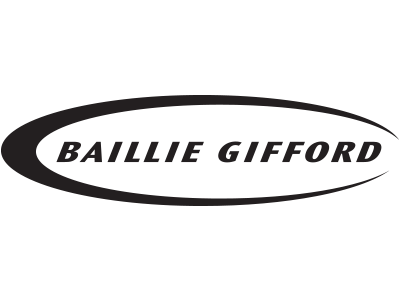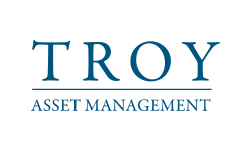
Maturing gilts: your options
Important notes - This page isn’t personal advice. If you’re not sure whether an investment is right for you, please seek advice. If you choose to invest, the value of your investment will rise and fall, so you could get back less than you put in.
Written by

Hal
Cook
Senior Investment Analyst
When a bond you own matures, the lump sum that had previously been invested in the bond is then returned as cash into your investment portfolio. It’s important you know it is coming and have a plan of what to do with it once received.
This page shows a few options, based on three common investing needs and goals, for you if you have a bond maturing soon.
My investment needs and goals are:
Use the links above or the side navigation to jump to the section that relates best to you.
If you hold your bonds via a fund, then you won’t need to worry about maturity values. The fund manager will manage this element and reinvest the cash into other bonds.
Want to check your knowledge of gilts? Read our article on what you need to know about buying government bonds (gilts).
This is not personal advice or a recommendation of where to invest. If you’re not sure what’s right for you, ask for advice. Investments, and any income from them, will fall as well as rise in value.
Investing in funds isn’t right for everyone. Investors should only invest if the fund’s objectives align with their own, and there’s a specific need for the type of investment being made. Investors should understand the specific risks of a fund before they invest, and make sure any new investment forms part of a long-term, diversified portfolio.
Want to leave investing to the experts?
HL's Ready-Made Investments offer an easy way to invest.
It’s an all-in-one investment that lets you leave the day-to-day decisions to a team of experts.
All you need to do is choose the option that best suits your needs and check in from time to time to make sure it still meets your goals.
I need to maximise my tax efficiency
Investors who purchase gilts directly, rather than through a fund, do not have to pay capital gains tax on any increases in their capital value between purchase and sale or maturity.
Note that there are securities available called gilt strips where no interest payments are made but all capital returns are taxed as income.
For some investors, particularly those who pay higher rate tax, this has made low coupon bonds very appealing. Coupons paid by gilts are taxed as income. Gilts with a low coupon are appealing because the majority of their returns come from a capital gain, which is not taxed.
It is important to understand that this doesn’t matter if you buy the gilt within a tax-efficient wrapper such as an ISA or a SIPP. ISAs and SIPPs are products which mean that any income or capital gain from investments within them is not taxable.
When it comes to considering what to do with the proceeds from the maturity of a gilt, it is therefore important for investors to consider whether they have used all of their allowances within these wrappers rather than simply buying another low coupon gilt. For example, it could be that an investor would be better off making use of their ISA allowance rather than buying a gilt in an ordinary Fund and Share Account.
It is important to note that the majority of new gilts coming to market have much higher coupons compared to those issued in recent years. This means that the proportion of the total return that comes from a capital gain is likely to be lower for new gilts compared to some that are available at the moment.
For many investors who bought gilts to take advantage of the lack of capital gains tax, simply reinvesting the maturity value into another low coupon gilt could be a good option, however there might be better options available to them.
All investors will have different circumstances when it comes to tax and investors should seek financial advice if they are unsure of what to do with the proceeds of a gilt maturity.
Tax rules can change and benefits depend on individual circumstances.
I need retirement income
Lots of people in retirement need income to supplement their pension. One of the positives of investing directly in gilts for income is that, by and large, the coupon (interest) payments are fixed. This means that investors know what income they will receive during the life of the gilt. This is very attractive for people in retirement who want a specific level of income or who are managing their level of income for tax reasons.
Of course, there is the comparatively low risk that the UK government defaults on their bond payments (doesn’t pay them), which might impact the coupon and maturity payments made.
Corporate bonds have similar characteristics to gilts, however they carry higher risk of default. This is particularly true for bonds issued by companies with lower credit ratings. To help manage default risk, investing in a blend of different bonds through an investment fund may be most appropriate.
Income paid by a fund is more variable because the fund manager will buy and sell bonds at different points in time and will invest in bonds with lots of different yields. This means that the level of income you will receive from investing in a fund will change over time and is not guaranteed.
There is always the option of investing in shares that pay dividends as well. This can be done directly or via funds and our suggestion would be that funds are likely a better way to smooth out dividend income from a number of different companies, rather than relying on the dividend payments from just a few.
Remember that dividends are not guaranteed and could be stopped at any time, so investing for income via shares is naturally a bit more risky when it comes to knowing what the future income will be from your investment portfolio. Some markets (such as the UK) have a bias towards companies which pay dividends, which means that when considered across a lot of companies, the dividend income becomes more reliable.
Fund ideas for income in retirement

Artemis Corporate Bond

Fidelity Global Dividend

Baillie Gifford Monthly Income
I need to accumulate wealth prior to retirement
Gilts can act as a diversifier within investment portfolios and provide an income, but for investors with very long-term time horizons, our view would be that shares (either held directly or via funds) are likely to be a better option for increasing their wealth. This is as long as the inevitable ups and downs don’t present a problem and investors are comfortable with the risk they may get back less than they invest.
For those investors who are approaching retirement or who may need access to their assets in the shorter term, holding some gilts (or bonds) definitely has its benefits.
Fund ideas for accumulating wealth before retirement

Legal & General Future World ESG Tilted and Optimised Developed Index

BNY Mellon Multi-Asset Balanced

Troy Trojan
Get advice on your investment choices
If you're not sure how or where to invest, you should consider getting advice from a professional.
Our financial advisers can work with you to understand your investment goals, risk appetite and affordability to create an investment portfolio to match your needs and align to your financial goals.

Important notes - This page isn’t personal advice. If you’re not sure whether an investment is right for you, please seek advice. If you choose to invest, the value of your investment will rise and fall, so you could get back less than you put in.
Written by

Hal
Cook
Senior Investment Analyst



